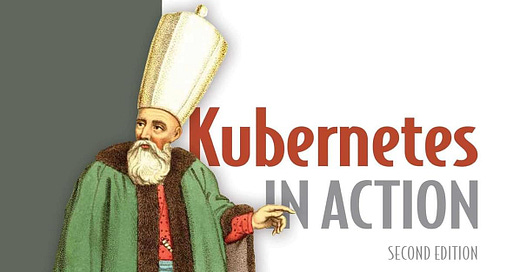Kubernetes in Action (2nd Edition by Marko Lukša, Kevin Conner) — A Great Starting Point for Learning Kubernetes
Kubernetes in Action (2nd Edition by Marko Lukša, Kevin Conner) — A Great Starting Point for Learning Kubernetes
When I began reading Kubernetes in Action, I quickly realized this book is more than just theory. The authors place a strong emphasis on clearly explaining what Kubernetes is, how it works, and why it has become so popular. Honestly, I was impressed from the first few pages.
What I Liked Most
First, the book contains numerous helpful illustrations that make it easier to understand how Kubernetes manages applications and abstracts infrastructure. These diagrams are not just decorative—they really help you grasp the big picture, especially if you're new to the subject. Moreover, the material is presented in such a simple, approachable way, as if you're speaking with an experienced mentor, not just reading a technical manual.
Now, let's break down the key ideas from the first chapters (1.1 Introducing Kubernetes - 1.2 Understanding Kubernetes) that stood out to me.
Introduction to Kubernetes: Why Is It Needed?
Kubernetes is essentially the "helmsman" for your applications. It automates the deployment and management process, handling daily operational tasks just like a captain's assistant. The whole point is for you to focus on project development while Kubernetes takes care of the routine work, ensuring your applications run smoothly.
As the author notes, the name Kubernetes is symbolic. Just as a helmsman steers a ship, Kubernetes directs your application, leaving the key decisions up to you.
Why Has Kubernetes Become So Popular?
The rise of microservices and containers has completely transformed how we develop software. In the past, applications were large, monolithic systems that were hard to scale and manage. Now, we work with dozens or even hundreds of microservices. Kubernetes automates the management of these microservices, making their deployment and scaling almost trivial. The author emphasizes that what used to be difficult has become simple and intuitive with Kubernetes.
How Does Kubernetes Handle Everyday Tasks?
Reading the book, I realized that Kubernetes isn't just a system for deploying applications. It's an entire ecosystem that automates scaling, monitors application health, and even recovers from failures. If your application crashes, Kubernetes will automatically restart it. If there's a hardware failure, Kubernetes will migrate workloads to healthy nodes. All of this saves time and reduces stress.
Key Components of Kubernetes
The author thoroughly explains the architecture of Kubernetes, dividing it into two primary planes: the Control Plane and the Workload Plane. The Control Plane manages the state of the entire cluster, while the Workload Plane is where applications are actually deployed. The explanations are logical, and the accompanying illustrations make it easier to understand each component.
Personal Experience
For me, this material was an excellent introduction to the topic. Kubernetes in Action helps you understand not only the theoretical foundations but also shows how Kubernetes actually works in practice. Most importantly, the authors do this in an accessible way, using examples and clear explanations. If you're looking to dive into the world of Kubernetes, this is the perfect starting point.




